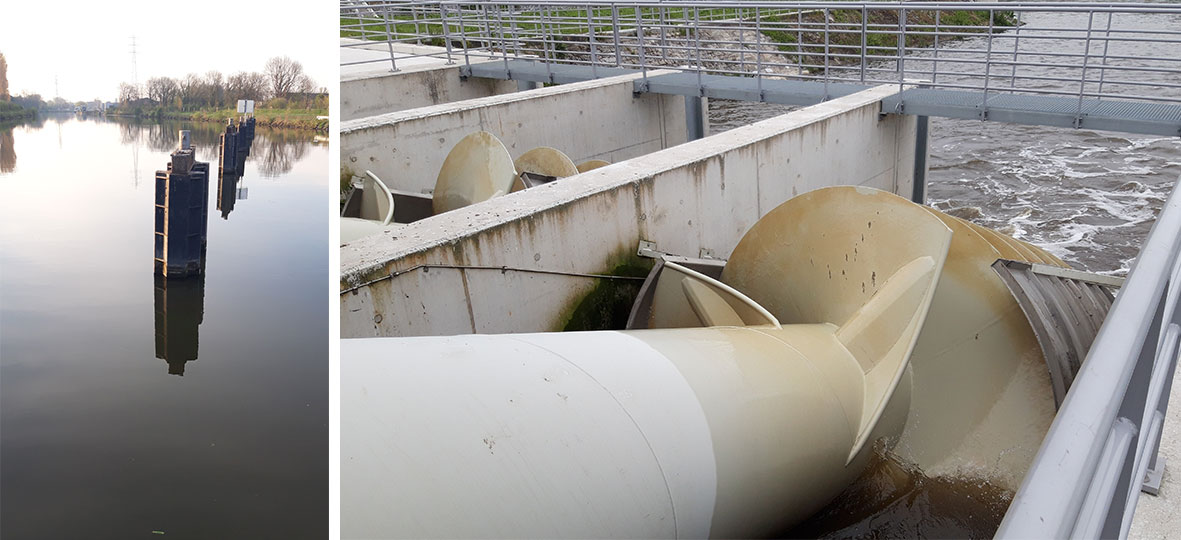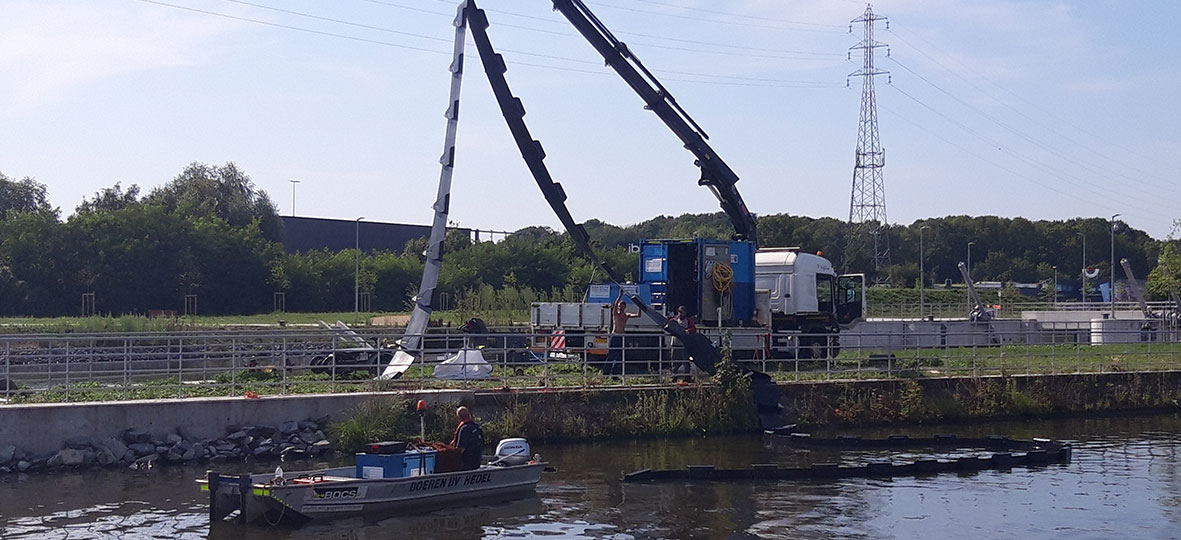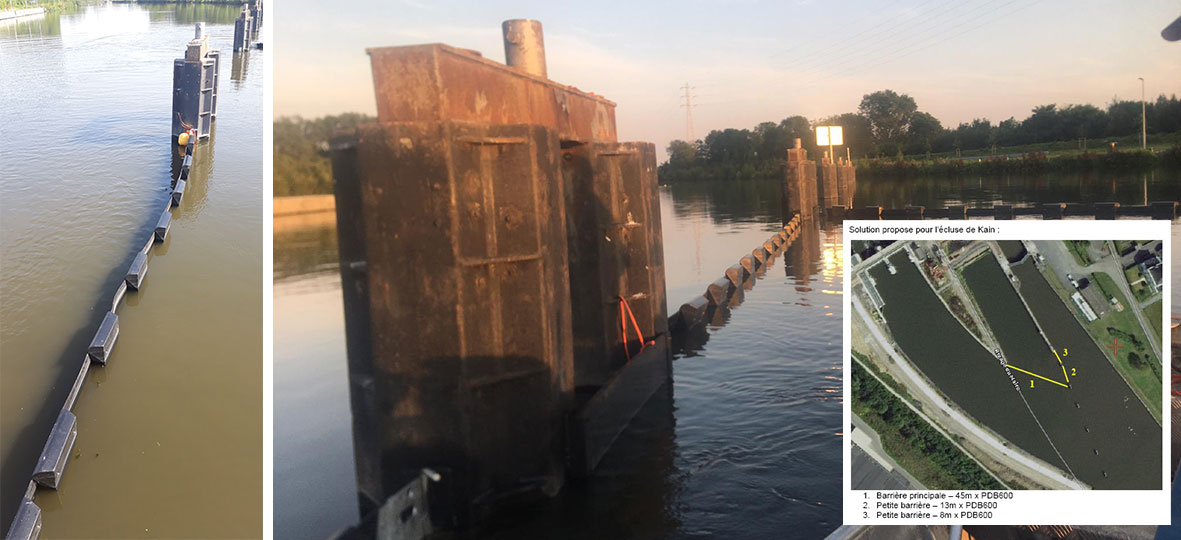
The lock in Kain, on the river Scheldt

Namur Division – Kain Lock: Bolina Booms PDB600 debris boom
In 2018, the lock in Kain, on the river Scheldt outside Tournai, was fully refurbished. For one thing, 2 new shutter weirs were installed to ensure automatic level control of the Scheldt, where flow rates in excess of 100 m³/s are no exception.
The difference in water level was also seized upon by installing 3 hydroelectric power turbines with Vandezande-built Archimedes screws.
The Archimedes screws are protected at the water inlet by a metal debris grating or weed screen. The sheer quantities of floating debris were so overwhelming however that manually cleaning these gratings was not an option. Along with plastics, large pieces of debris such as branches and even entire trees, combined with smaller branches, twigs and leaves completely clog up the gratings, which meant the hydroelectric power screws were not getting the flow rate they needed. The only option was to halt the screws and to remove all floating debris using a lorry-mounted hydraulic crane.
As the inflow of the turbines went via a separate water inlet duct, it was impossible to dispose of the floating debris via the shutter weirs in place. Thanks to Bolina’s PDB600 debris boom which we placed at the entrance of this inlet duct, we were able to automatically dispose of the floating debris towards the shutter weirs. We opted for black floats for minimal visual impact. Given the existing defence piles, there was no visual need in respect of the bargees.
To this end, Bolina Booms’ debris containment screen obviously needed to be fitted at an angle. However, given the straight concrete inflow to the turbines, the screen which measures 45 metres in length, was installed against the inlet to the shutter weirs starting from the second defence pile. Needless to say, the 2 apertures between the lock and the other defence piles were sealed off by way of screens measuring 13 metres and 8 metres respectively. As the main flow at all times goes to the turbines – or, in the event of higher flow rates, to the shutter weirs –, the floating debris is now automatically disposed of, whilst enabling the turbines to perform under optimum operating conditions.




